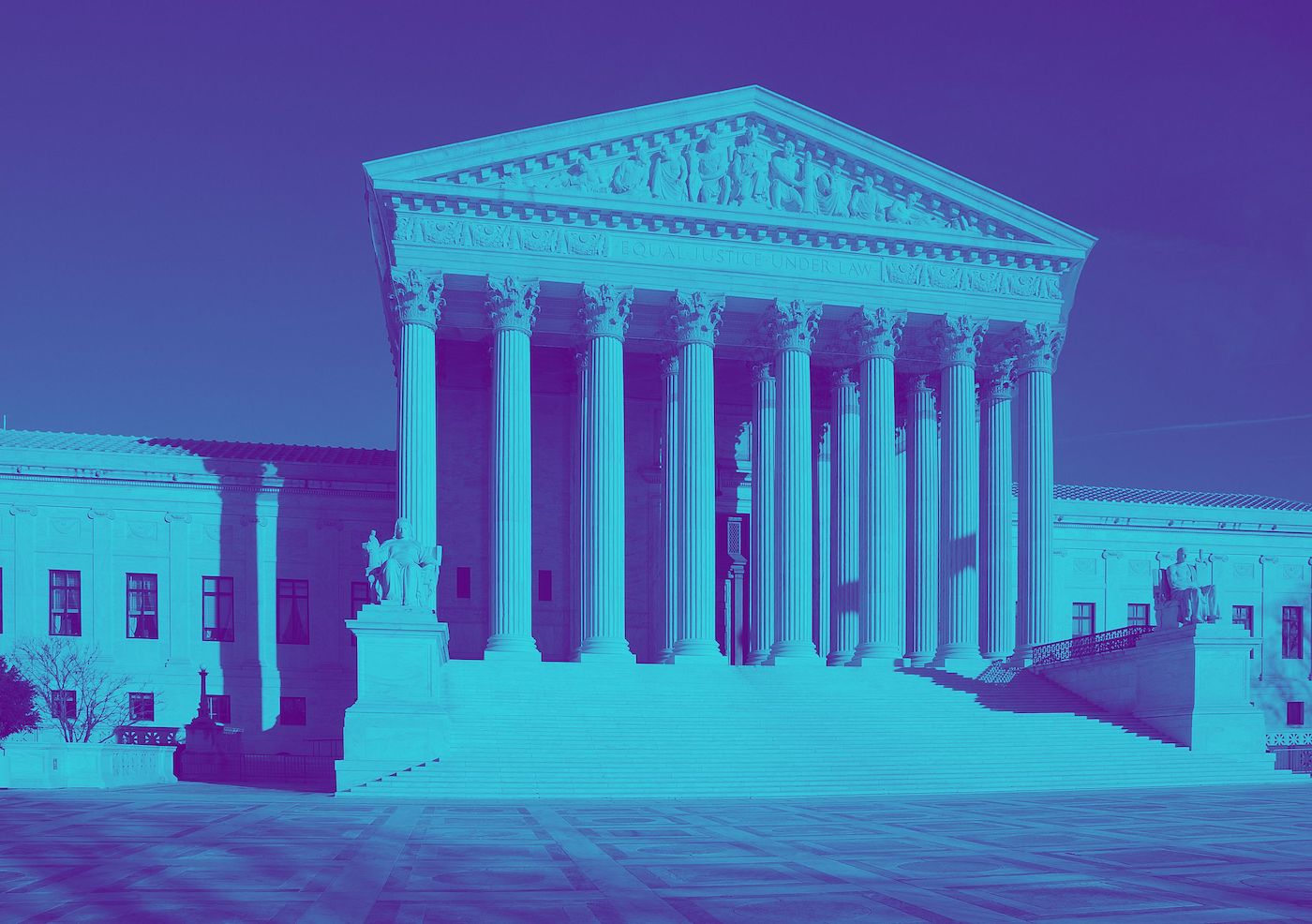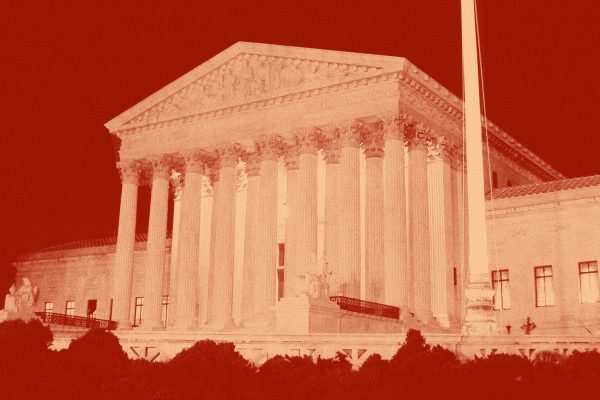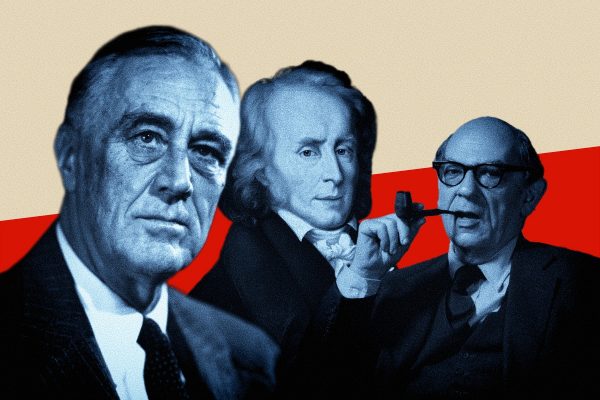Alexis de Tocqueville observed that in the United States, almost every political debate ends up becoming a legal one. During his visit in 1831, he watched Americans incorporate legal language and ideas “in their daily polemics” and concluded that the spirit of the lawyer “infiltrates all of society.” Tocqueville had a point: even today, if you can convince an American that something is legal, it’s a short step from there to convincing him that it’s good. Conversely, if a policy is presumptively unconstitutional, however wise or helpful it might be, it’s out.
Legal philosopher Brian Tamanaha has written about this phenomenon with regard to what he calls the “problematic asymmetry” between left and right discourse about law. The right talks fidelity to the text; the left views constitutional law as a means of achieving desired social ends. (During his confirmation hearing in 2005, for example, Chief Justice John Roberts said he would just “call balls and strikes.”) But this rhetorical framing of the left’s and right’s respective jurisprudential philosophies is of recent vintage, obscuring far more than it shows.
In fact, it was not so long ago that progressives attacked conservatives for “loose construction” that strayed from the text. In 1896, just twenty-four years after the Supreme Court held that “the one pervading purpose” of the Fourteenth Amendment was race equality, it was endorsing “separate but equal” train cars in Plessy v. Ferguson and rapidly transforming the Fourteenth Amendment’s Due Process Clause into a protective shield for corporations against labor. Between 1886 and 1910, of the 307 Fourteenth Amendment cases that came before the Court, 288 involved corporations seeking “due process” rights of natural persons; 19 dealt with African Americans. “Due process,” wrote political scientist Edward Corwin, was “not a legal concept at all.” It was instead a roving torpedo judges could use “to sink whatever legislative craft” seemed to them to be “of a piratical tendency.”
Public opinion was no kinder. The 1895 Pollock decision, which struck down the federal income tax, inspired calls across the country to impeach the justices and abolish judicial review altogether. After the 1936 United States v. Butler ruling gutted a New Deal agricultural program, a passerby in Ames, Iowa, discovered six life-sized effigies of the majority opinion justices hanged by the side of a road.
The political axis flipped for a time after World War II, when a Warren Court liberal on criminal procedure, voting rights, and civil rights convinced progressives to make their peace with judicial solutions to political problems. As Joseph Fishkin and William E. Forbath note, “constitutional law was best left to the lawyers, economic questions to the economists.” But in winning the battle, progressivism lost the war. Once the Court’s composition changed, around the time Warren Burger became chief justice in 1969, the bargain was easily undone. With a friendly ear on the bench, conservative lawyers were eager to jump into the void, armed with a utopian vision of the American way of life under small government, Christian faith, and family, and a novel (albeit thoroughly ahistorical) theory of the fixed original meaning of the Constitution—one that was not living but emphatically “dead, dead, dead.” The new “originalist” jurisprudence—at its core, a political project aimed at rolling back progressive judge-made change—quickly gained traction with the conservative elite and had a transformational effect on the courts in the intervening decades.
This forum is featured in Rethinking Law.
The stakes of this transformation are apparent in case after case over the last half century. In 1977 the Court saw no problem in defending state bans on Medicaid coverage for abortions with the observation that, “The indigency that may make it difficult—and in some cases, perhaps, impossible—for some women to have abortions is neither created nor in any way affected by” the government’s refusal to provide coverage. In 1974 it decided that segregated public schools in Detroit produced by redistricting and white flight were not a problem unless deliberate discriminatory intent could be proven in these developments. (Within a decade and a half of the case, Detroit’s public schools were 90 percent Black.) In 2007 the Court gutted a Seattle public school busing program, reasoning that “racial balancing” was “patently unconstitutional,” even if done in the interest of promoting diversity.
In contrast to the “originalist” views of this new generation of conservative jurists, Fishkin and Forbath urge us to read the Constitution in a spirit of pragmatism, animated by values that promote our nation’s democratic health, and to forge a new, popular constitutionalism based on an egalitarian vision of political and economic order under our Constitution. I thoroughly endorse this project. But so long as a conservative Supreme Court with textualist leanings remains the final arbiter of questions of constitutionality, this will be an uphill battle. To succeed, progressives must be prepared to dismantle the powerful fictions of a “fixed meaning” to the Constitution and of a politically neutral Supreme Court that simply calls balls and strikes. While a new program of constitutional thought is a necessity for advancing a vision of an anti-oligarchic, egalitarian Constitution, it must be paired with conscious efforts to dismantle a jurisprudential sleight of hand that claims, first, that constitutional meaning is fixed, and second, that only judges are capable of understanding it.
Thankfully, our nation’s constitutional beginnings support this project. As Tom Ginsburg has put it, our Framers were “committed empiricists.” They approached the task of regime-building with what David A. Strauss has characterized, in a different context, as a spirit of humility, fully aware that the text would have flaws and gaps that others down the road would need to fill. (Alexander Hamilton, for example, admitted in an echo of Hume that “no human genius, however comprehensive,” could write a constitution that couldn’t do with improvements down the line.) A jurisprudence hostile to learning from our own mistakes is nowhere required by our founding document, and it probably would have been disapproved by our own founders. In fact, in the years after the Founding, our nation was knit together—and the Court’s own powers of constitutional interpretation established—by none other than “loose constructionist” Chief Justice John Marshall.
Will this convince the dyed-in-the-wool originalist that a progressive constitutionalism is desirable or necessary? Probably not. But these scholars, part of a tightknit ideological movement that hardly speaks for the ordinary American, should not be the audience for a democratic movement. (They are, however, worthy foes for progressive constitutionalists aiming to tear down originalism’s privileged status as method.) When Fishkin and Forbath call for reclaiming the First Amendment to make it safe for labor again, reforging the link between racial justice and political economy, and bringing concerns of economic justice back into fields like antitrust, monetary policy, and corporate law, I read them as saying that the choice to make the law blind to justice—i.e., shutting our eyes to the realities of money, history, race, and power—is just that: a choice.
The political upshot is that movement conservatism will not lose its rhetorical advantage unless Americans come around to the idea that we can decouple the law from value-blind formalism. Fishkin and Forbath’s most fundamental insight might be this: at bottom, there are thick and ineliminably political disputes about how to interpret what our Constitution says and requires. And if interpretation is inescapably political in this way—if it always involves more than calling balls and strikes—then the courts must not be the sole vehicle for it: both popular movements and popular representation have a primary role to play.
Today, we must reverse postwar liberalism’s retreat to Great Society bureaucracy. We have to repoliticize the act of interpretation itself—not by trying to “capture” or “tame” the Court, but by looking beyond it, by winning battles in the arena of popular politics. We need a vision, grounded in the Constitution, of a more just United States. We can and should opt to build a new popular constitutionalism, but we should be well-prepared for a difficult battle ahead.








